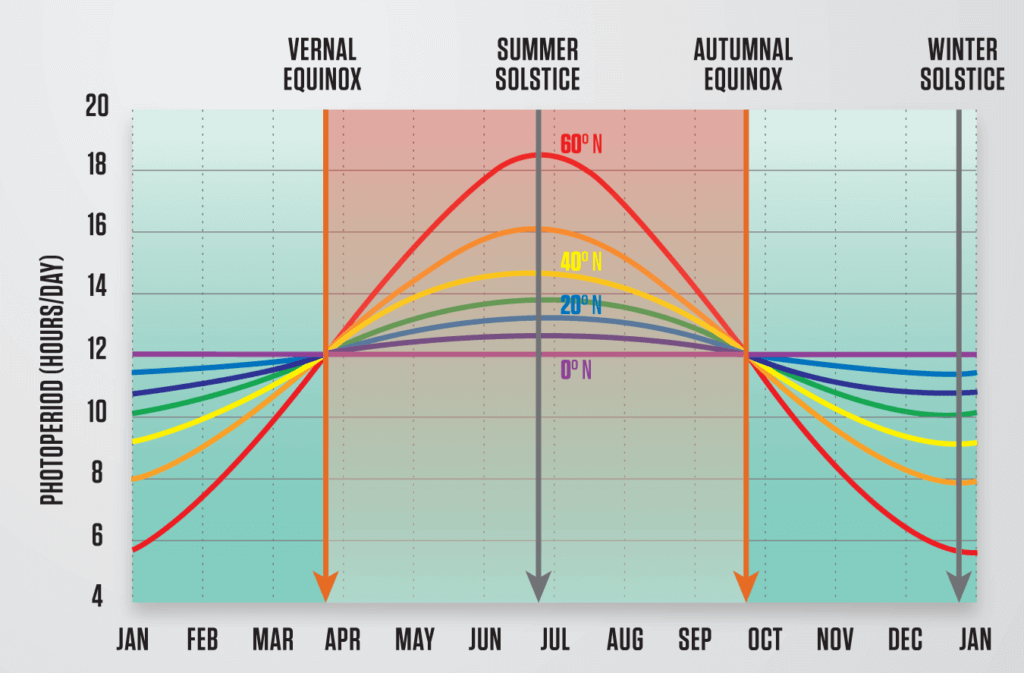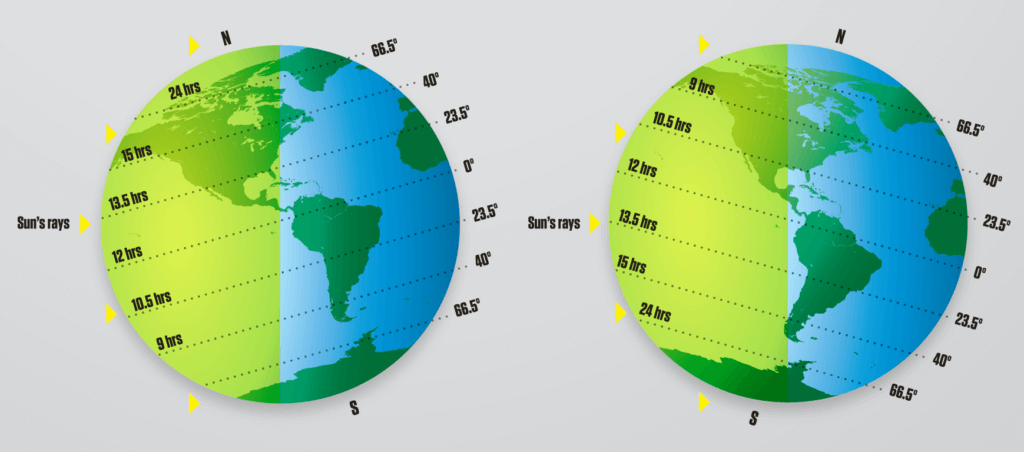Photoperiodism is the physiological reaction of organisms to the length of day or night.
EQUINOX: EQUAL DAY AND NIGHT
There are two distinct dates called equinoxes, vernal (spring) and autumnal (fall) that mark the point at which the day length is the same at the equator as the Arctic Circle! The vernal equinox occurs around March 20th each year and the autumnal equinox occurs around September 22nd. Gardeners growing crops that require a certain number of hours to maintain vegetative growth or to trigger flowering and fruiting growth must know the length of day to accurately plan their crops and harvests. The equinoxes are highly significant for gardeners because they indicate the correct time to plant photoperiod sensitive crops outdoors in the spring and fall for summer growth and fall harvest. As well as shifting to longer days in the spring and shorter days in the fall.
DAY LENGTH
The angle of the sun’s rays with respect to the tilt of the earth will determine the length of the day depending on the time of year and the hemisphere in which you live. In the northern hemisphere (above the equator), the longest day of the year is the called the summer solstice and the shortest day of the year is called the winter solstice.
– Brandon Jewell, Botanicare
Continued in How to acclimatize rooted plant cuttings in 7 days ⟶

